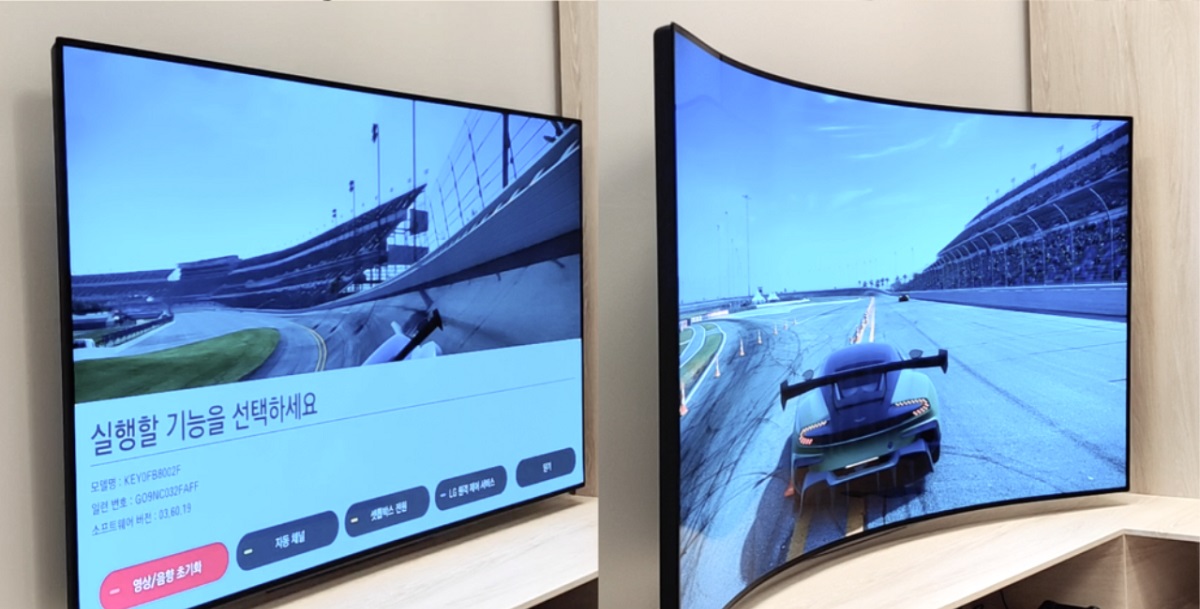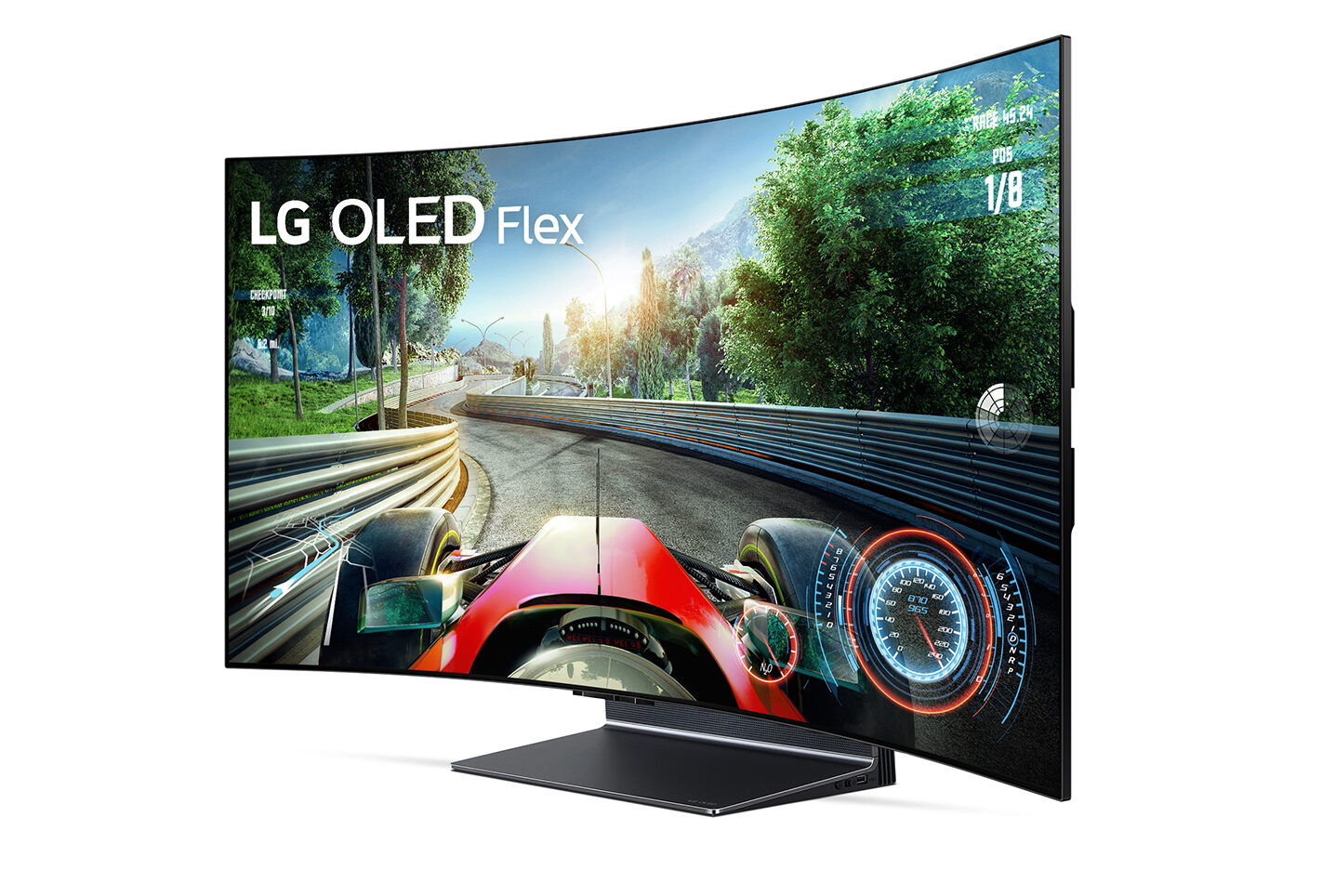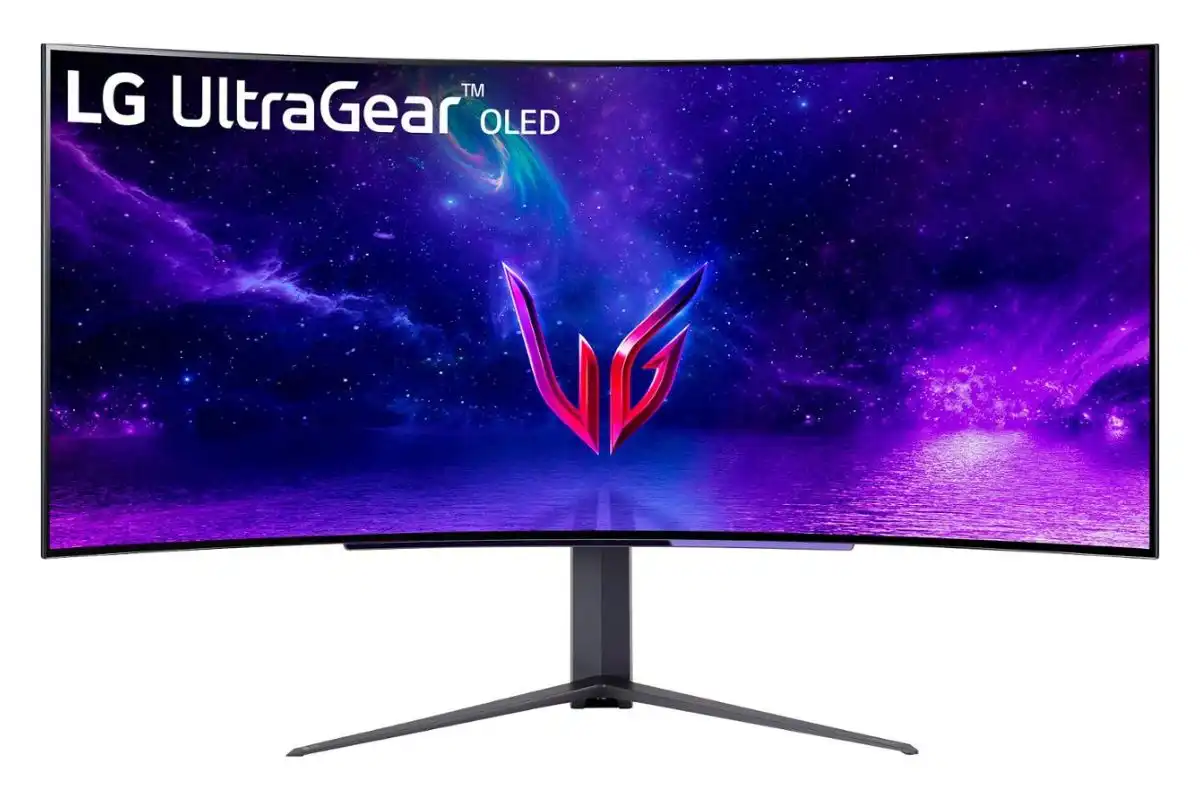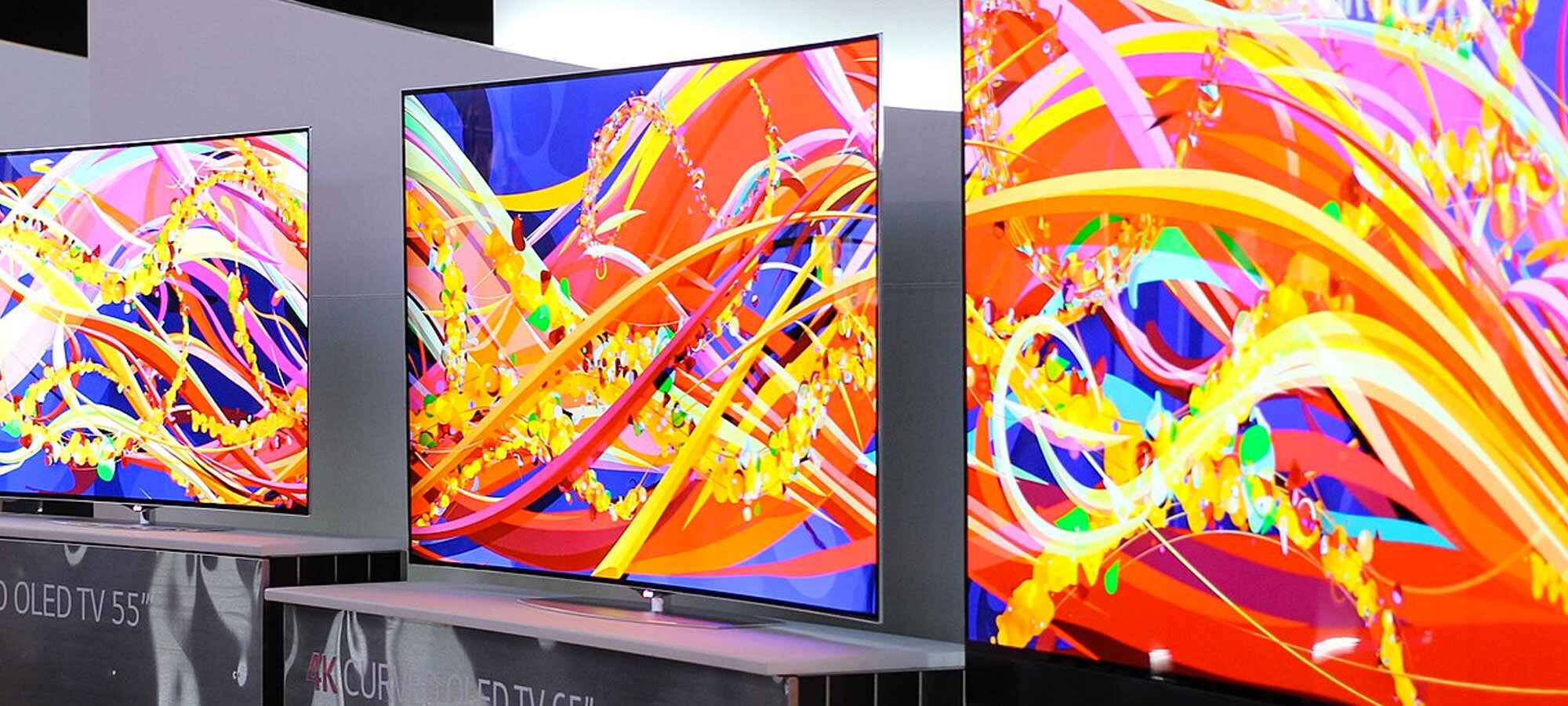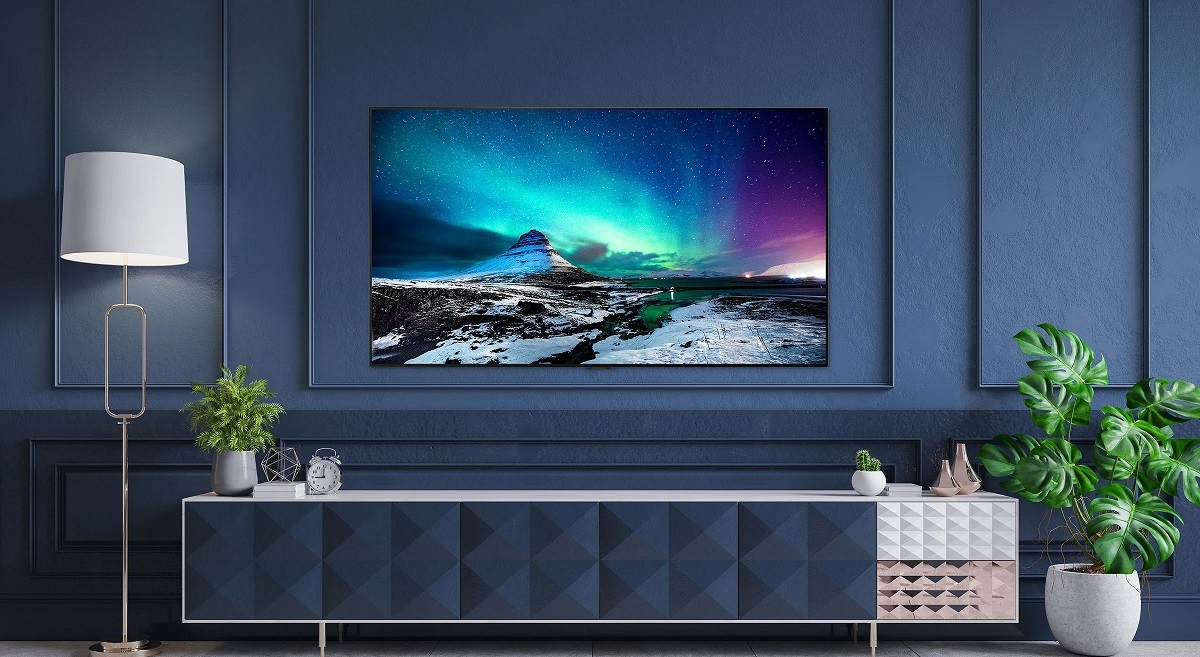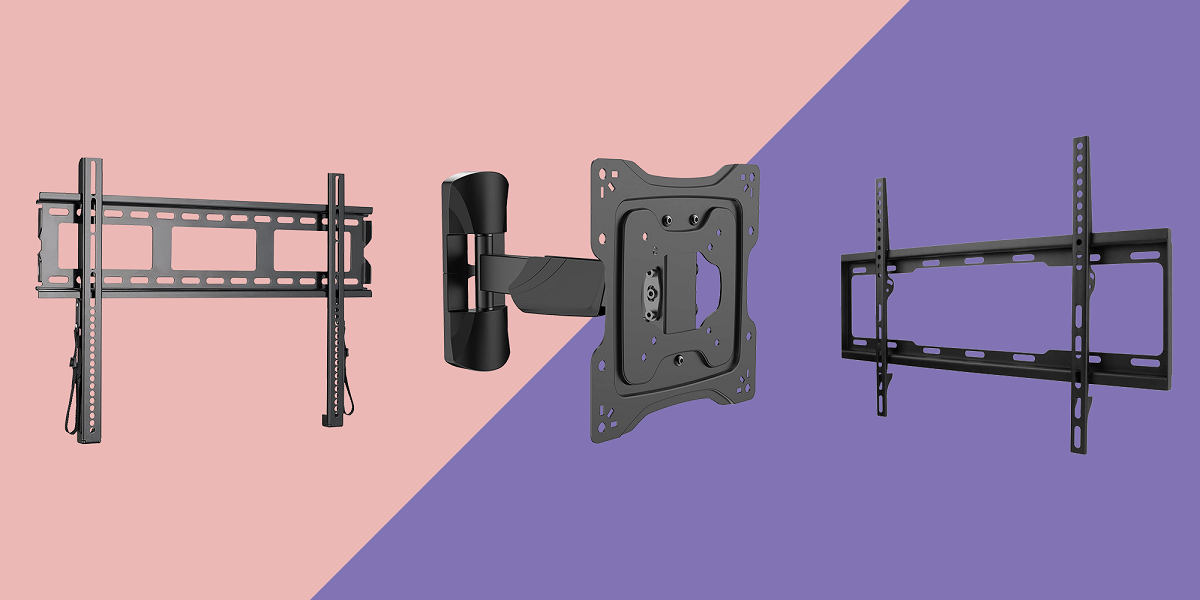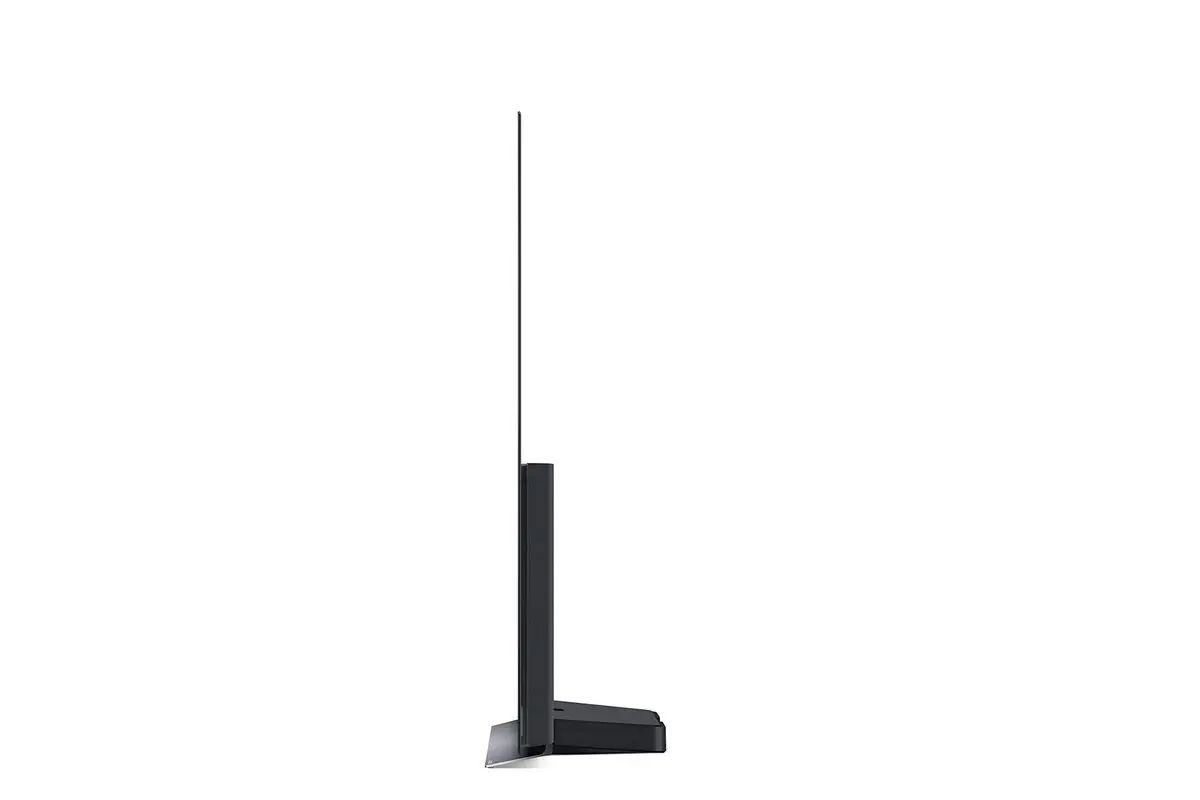Introduction
Welcome to the world of curved OLED TVs, where technology meets design to deliver an immersive viewing experience like you’ve never seen before. In this article, we will explore the fascinating world of curved OLED TVs, understanding their features, benefits, and drawbacks, and providing insights to help you make an informed purchase decision.
OLED (Organic Light Emitting Diode) technology has revolutionized the television industry, offering stunning picture quality with vibrant colors, deep blacks, and wide viewing angles. Unlike traditional LCD TVs, OLED TVs do not require a backlight, as each individual pixel emits its own light. This allows for precise control over each pixel, resulting in unparalleled contrast and picture clarity.
Curved OLED TVs take this cutting-edge technology a step further by wrapping the screen around slightly, creating a gentle curve that mimics the natural curvature of the human eye. This curved design aims to provide a more immersive viewing experience by enhancing perceived depth and reducing distortion at the edges.
The concept of curved TVs originated as an attempt to recreate the immersive feel of a movie theater, where the screen is curved and encompasses your field of vision. Over the years, curved TVs have gained popularity, with manufacturers incorporating this design into their high-end TV models.
However, it’s important to note that the curved design is a matter of personal preference. Some viewers appreciate the immersive feel and the unique aesthetic appeal of a curved TV, while others prefer the traditional flat design. Whether a curved OLED TV is right for you will depend on your viewing habits, seating arrangement, and personal taste.
In the following sections, we will dive deeper into the benefits and drawbacks of curved OLED TVs, as well as important factors to consider when purchasing one. So, get ready to step into the world of curved OLED TVs and discover the possibilities of a truly captivating viewing experience.
What is an OLED TV?
An OLED TV, short for Organic Light Emitting Diode TV, is a type of television display technology that offers exceptional picture quality and a host of cutting-edge features. Unlike traditional LCD TVs, which use a backlight to illuminate the pixels, OLED TVs have self-emissive pixels that individually emit light. This allows for precise control over each pixel’s brightness and color, resulting in vibrant, lifelike images.
The organic materials used in OLED displays can emit light when an electric current is applied. This eliminates the need for a backlight, making OLED TVs incredibly thin and flexible. Each pixel in an OLED TV can independently switch on and off, resulting in perfect black levels as the pixels can completely turn off to achieve true darkness. This also leads to excellent contrast ratios, where bright objects in the scene truly pop against deep blacks.
One of the key advantages of OLED technology is its ability to offer a wide viewing angle. Unlike LCD TVs that suffer from color shifting and contrast degradation when viewed from an angle, OLED TVs maintain uniform image quality, ensuring everyone in the room can enjoy the same stunning visuals.
In addition to picture quality, OLED TVs also excel in terms of response time. The fast pixel response rate of OLED displays ensures smooth motion handling, making them ideal for watching fast-action scenes or playing video games. This eliminates motion blur and ghosting, providing a more enjoyable and immersive viewing experience.
Another noteworthy feature of OLED TVs is their ability to achieve high dynamic range (HDR) capabilities. HDR content, which offers a wider range of contrast, allows for more detail in both bright and dark areas of the image. OLED’s ability to deliver deep blacks and bright highlights makes it a perfect match for HDR content, resulting in breathtakingly realistic visuals.
As technology advances, OLED TVs continue to evolve, with manufacturers incorporating features like Dolby Vision, HDMI 2.1, and advanced image processing algorithms to enhance the viewing experience even further.
In the next section, we will explore how OLED TVs work and delve into the fascinating science behind this incredible display technology.
How does an OLED TV work?
To understand how an OLED TV works, let’s take a closer look at its underlying technology. OLED stands for Organic Light Emitting Diode, and it consists of thin layers of organic materials sandwiched between two electrodes.
When an electric current is applied to the OLED layers, the organic materials emit light. This is in contrast to LCD (Liquid Crystal Display) TVs, which require a separate backlight to illuminate the pixels. In an OLED TV, each individual pixel emits its own light, resulting in more accurate color reproduction, deeper blacks, and improved contrast.
The OLED layers in the display consist of three main components: an emissive organic layer, a conductive organic layer, and a substrate. The emissive organic layer contains organic materials that emit light when subjected to an electric current. The conductive organic layer helps to control the flow of electric charges, while the substrate provides structural support for the layers.
Each pixel in an OLED TV is made up of sub-pixels, typically red, green, and blue (RGB). By varying the intensity of the electric current passing through each sub-pixel, the OLED TV can create different colors and shades. This allows for precise control over the color accuracy and vibrancy of the displayed images.
Unlike LCD TVs, which use liquid crystals to control the amount of light passing through each pixel, OLEDs have the advantage of turning individual pixels completely off. When a pixel is off, it does not emit any light, resulting in true blacks. This ability to achieve perfect black levels contributes to an exceptional contrast ratio between the bright and dark areas of the screen.
OLED TVs also have a much faster response time compared to LCDs, as each pixel can individually switch on and off almost instantaneously. This eliminates motion blur and reduces the display’s response time, making OLED TVs ideal for watching fast-action content like sports or playing video games.
Additionally, the self-emissive nature of OLEDs allows for a wide viewing angle. Traditional LCD TVs suffer from color shifts and contrast loss when viewed off-axis, but OLED TVs maintain consistent image quality regardless of the viewer’s position. This makes OLED TVs suitable for larger living rooms or setups where viewers are seated at various angles.
As OLED technology continues to advance, manufacturers are also working on addressing its potential drawbacks, such as image retention and limited brightness in certain scenarios. They are employing various techniques like pixel shifting and improved materials to enhance OLED TV performance and longevity.
In the following sections, we will explore the evolution of curved OLED TVs and the benefits they bring to the viewing experience.
The evolution of curved TVs
The concept of curved TVs has seen a significant evolution over the years, driven by both technological advancements and the desire to enhance the viewing experience. The journey from flat screens to curved displays has been an intriguing one, and in this section, we will explore the key milestones in the evolution of curved TVs.
The idea of curved displays originated from the desire to replicate the immersive feel of a movie theater. The curved screens in theaters wrap around the viewers, creating a sense of depth and drawing them into the action. This cinematic experience led manufacturers to experiment with curved TV designs as a way to bring that same level of immersion into homes.
In 2013, Samsung took the lead by introducing the first commercial curved OLED TV. This revolutionary product featured a gently curved screen that aimed to envelop the viewer and provide an immersive viewing experience. The curved design was seen as a way to make the TV more engaging and aesthetically appealing than traditional flat screens.
After Samsung’s initial foray into curved OLED TVs, other manufacturers followed suit, presenting their own curved TV models. LG, for instance, launched its curved OLED TV lineup, allowing consumers to choose from a variety of screen sizes and designs. These curved TVs quickly gained popularity among technology enthusiasts and home theater enthusiasts.
However, as the popularity of curved TVs grew, so did debates about their practicality and benefits. Critics argue that the curve does not significantly enhance the viewing experience and that it may even introduce viewing angle issues for those seated off-center. Additionally, concerns were raised about the limited viewing sweet spot, where viewers must be positioned at the right angle to fully appreciate the curved effect.
Despite these debates, the evolution of curved TVs continues, with manufacturers refining the technology and design to address these concerns. In recent years, curved TVs have seen advancements in terms of screen curvature, display technology, and user experience.
Modern curved TVs now feature more subtle curves that provide a slight wrap-around effect without compromising the overall viewing experience. These improvements aim to strike a balance between immersion and practicality, making curved TVs more accessible to a wider audience.
Furthermore, manufacturers have introduced innovative technologies like Quantum Dot displays and High Dynamic Range (HDR) capabilities into curved TVs. These advancements bring enhanced color accuracy, wider color gamut, and improved contrast ratios, further elevating the picture quality and viewing experience.
It’s important to note that curved TVs may not be suitable for every viewing environment or personal preference. Factors such as room layout, seating arrangement, and individual preferences play a significant role in deciding whether a curved TV is the right choice.
In the next sections, we will delve into the benefits and drawbacks of curved OLED TVs, helping you make an informed decision about whether to choose a curved display for your home entertainment setup.
Benefits of a curved OLED TV
Curved OLED TVs offer several unique benefits that set them apart from their flat-screen counterparts. While opinions may vary, many users find these advantages to be compelling reasons to opt for a curved display in their home entertainment setup. In this section, we will explore the benefits of a curved OLED TV.
1. Immersive Viewing Experience: One of the primary benefits of a curved OLED TV is the immersive viewing experience it provides. The gentle curvature of the screen is designed to mimic the natural curvature of the human eye, allowing for a more immersive and engaging experience. By wrapping slightly around the viewer, the curved display expands the perceived depth and creates a sense of being enveloped in the content, particularly when watching movies or playing video games.
2. Enhanced Depth Perception: The curvature of a OLED TV can enhance the perception of depth in the image. It adds a sense of realism to the content by creating a panoramic effect and making objects appear more three-dimensional. This depth enhancement can make movies, nature documentaries, and video games come to life, providing a more captivating and realistic visual experience.
3. Reduced Distortion at Edges: The curve of an OLED TV helps to minimize distortion at the edges of the screen. Flat screens often suffer from visual distortions, such as pincushion distortion, where straight lines appear slightly curved towards the edges. The curvature of a OLED TV helps to mitigate this issue, delivering a more uniform and visually pleasing image from edge to edge.
4. Wide Viewing Angle: OLED technology already offers a wide viewing angle compared to LCD TVs, but the curve of a OLED TV further enhances this attribute. With a curved display, viewers can enjoy consistent picture quality and color accuracy from virtually any seating position in the room. This makes curved OLED TVs an excellent choice for larger living rooms or setups where viewers are seated at various angles.
5. Aesthetically Pleasing Design: The curved design of OLED TVs adds a touch of elegance and sophistication to any room. The sleek and slim profile, combined with the curved screen, creates a visually appealing focal point that blends seamlessly with modern home decor. The aesthetics of a curved OLED TV can elevate the overall ambiance of the space, becoming a statement piece in itself.
While these benefits make curved OLED TVs an appealing choice for many, it’s important to consider personal preference and viewing habits. Some viewers may find the immersive experience of a curved display to be transformative, while others may prefer the traditional flat design. Assessing your needs and preferences will help you determine whether a curved OLED TV is the right fit for your home entertainment setup.
In the next section, we will discuss the drawbacks of curved OLED TVs, addressing some of the considerations you should keep in mind when making a purchase decision.
Drawbacks of a curved OLED TV
While curved OLED TVs offer unique advantages, it’s essential to consider the drawbacks before making a purchase decision. While opinions on these drawbacks may vary from person to person, it’s important to be aware of these factors to make an informed choice. In this section, we will explore the drawbacks of curved OLED TVs.
1. Limited Viewing Sweet Spot: One of the main concerns with curved OLED TVs is the limited viewing sweet spot. To fully appreciate the immersive effect of the curvature, viewers need to be positioned directly in front of the screen at an optimal distance and angle. When seated off-center or at extreme angles, the curvature can distort the image and compromise the viewing experience. This limitation can be a concern for households with multiple viewers or larger seating arrangements.
2. Reflections and Glare: The curved nature of OLED TVs can increase the likelihood of reflections and glare on the screen. When ambient light sources or bright objects are positioned at certain angles, they can reflect on the curved surface and cause distracting reflections. This can be particularly noticeable in rooms with windows or intense lighting setups. Proper positioning and light control can help minimize this issue, but it may still be a consideration for some users.
3. Mounting and Placement: Curved OLED TVs can present challenges when it comes to mounting and placement. The curvature of the screen may require specific wall brackets or stands that are compatible with the TV’s design. Additionally, the curve can limit the flexibility of placement options and may require careful consideration of room layout and furniture arrangement to ensure optimal viewing angles for all viewers.
4. Compatibility with Wall Mounts and Accessories: Curved OLED TVs may not be compatible with standard wall mounts or accessories designed for flat-panel displays. This can limit the options for mounting and accessorizing the TV, potentially requiring specialized or dedicated accessories that are specifically designed for curved displays. It’s important to ensure compatibility when selecting a wall mount or other accessories for a curved OLED TV.
5. Higher Cost: Curved OLED TVs generally come at a higher price point compared to their flat-screen counterparts. The design intricacies and manufacturing processes involved in creating curved displays contribute to the higher costs. While the price difference may vary between different models and manufacturers, it’s worth considering this factor when budgeting for a new TV purchase.
Ultimately, the decision to choose a curved OLED TV comes down to personal preferences and specific viewing circumstances. Some viewers may find the drawbacks to be acceptable trade-offs for the immersive experience and unique aesthetic appeal, while others may prioritize a flat-screen design and wider viewing angles. Considering your viewing habits, room layout, and visual preferences will help you make the most appropriate choice for your home entertainment setup.
In the next section, we will discuss the factors to consider when buying a curved OLED TV, helping you make an educated decision and find the best model for your needs.
Factors to consider when buying a curved OLED TV
Purchasing a curved OLED TV requires careful consideration of various factors to ensure you find the right model that meets your needs and preferences. From display specifications to connectivity options, taking these factors into account can help you make an informed decision. In this section, we will discuss the key factors to consider when buying a curved OLED TV.
1. Display Size and Viewing Distance: Determine the ideal display size based on the viewing distance and the room size. Curved OLED TVs are available in a range of sizes, so it’s essential to find the right balance to ensure a comfortable viewing experience without overwhelming the space or straining your vision. Consider the optimal viewing distance recommended for the screen size to ensure you can fully appreciate the immersive effect of the curvature.
2. Display Resolution: Choose a curved OLED TV with the desired display resolution. Most modern OLED TVs offer 4K Ultra HD resolution, providing exceptional detail and clarity. However, if you prefer a more budget-friendly option or have specific requirements, you may consider models with lower resolutions. Keep in mind that higher resolutions offer sharper and more detailed images, especially when viewing native 4K content.
3. HDR Support: Look for a curved OLED TV that supports High Dynamic Range (HDR) technology. HDR enhances the contrast and color of the displayed content, resulting in more vibrant and realistic visuals. Ensure the TV is compatible with popular HDR formats like HDR10 or Dolby Vision to enjoy a broader range of HDR content from streaming platforms, Blu-ray players, and gaming consoles.
4. Refresh Rate and Response Time: Consider the refresh rate and response time of the curved OLED TV, especially if you enjoy watching fast-paced content like sports or playing video games. Higher refresh rates reduce motion blur, resulting in smoother and more fluid image transitions. Additionally, a lower response time helps prevent ghosting and motion artifacts, ensuring a more enjoyable viewing or gaming experience.
5. Smart TV Capabilities: Check whether the curved OLED TV offers smart TV capabilities. Smart features allow you to access streaming services, browse the internet, and download apps directly on your TV. Look for an intuitive and user-friendly smart TV platform that supports the streaming services you use most frequently. Consider features like voice control, built-in Wi-Fi, and app compatibility to enhance your viewing experience.
6. Connectivity Options: Assess the connectivity options of the curved OLED TV. Look for an adequate number of HDMI and USB ports to accommodate your devices, such as gaming consoles, Blu-ray players, or external storage devices. Ensure the TV is equipped with the latest HDMI version that supports features like 4K resolution and HDR content. Additionally, consider additional connectivity options like Bluetooth and Ethernet for seamless connectivity with other devices.
7. Design and Aesthetics: Consider the design and aesthetics of the curved OLED TV, as it will be a focal point in your living space. Look for a sleek and stylish design that complements your home decor. Consider factors like the thickness of the bezels, the stand or mounting options, and the overall build quality. Evaluate the curved screen’s angle and curvature to ensure it fits well with your viewing environment.
8. Brand and Warranty: Research the reputation of the brand and the warranty offered by the manufacturer. Opt for well-established brands known for their reliability and excellent customer service. A comprehensive warranty provides peace of mind in case of any manufacturing defects or issues that may arise during the usage of the TV.
By considering these factors, you can narrow down your options and find a curved OLED TV that meets your specific requirements. Remember to compare prices and read reviews to make an informed decision and maximize your enjoyment of this advanced display technology.
In the following section, we will explore some of the top brands offering curved OLED TVs to help you choose a trusted and reputable manufacturer.
Top brands offering curved OLED TVs
When it comes to curved OLED TVs, several reputable brands have made their mark in the market. These brands offer exceptional picture quality, innovative features, and cutting-edge technologies to deliver an immersive viewing experience. In this section, we will explore some of the top brands known for their curved OLED TVs.
1. LG: LG is renowned for its OLED technology expertise, and they have been at the forefront of the curved TV revolution. Their OLED TVs are widely praised for their exceptional picture quality, deep blacks, and vibrant colors. LG’s curved OLED TVs often feature advanced features like Dolby Vision HDR, AI-powered image processing, and sleek designs. With a wide range of screen sizes and models to choose from, LG remains a top choice for curved OLED TVs.
2. Samsung: Samsung is another prominent brand offering curved OLED TVs with stunning picture quality and premium features. Their curved OLED displays are known for their bold and vibrant colors, making the content visually captivating. Samsung’s curved OLED TVs often incorporate technologies like Quantum Dot, high refresh rates, and smart TV capabilities. With their strong reputation for display quality and design, Samsung is a popular choice for those seeking a curved OLED TV.
3. Sony: Sony has made its mark in the curved OLED TV market with their Bravia series. Known for their exquisite design and impressive picture quality, Sony’s curved OLED TVs deliver a superior viewing experience. With advanced features like XR OLED Contrast Pro, Acoustic Surface Audio, and support for various HDR formats, Sony continues to offer innovative and top-of-the-line curved OLED TVs.
4. Panasonic: Panasonic is a brand that has earned a reputation for its high-performance OLED TVs, including those with curved screens. Their curved OLED TVs feature stunning color accuracy, remarkable contrast, and smooth motion handling. Panasonic often incorporates technologies like HCX Pro Intelligent Processor, Dolby Vision, and a wide color spectrum to provide an immersive and cinematic experience. With their commitment to quality and attention to detail, Panasonic is a brand worth considering for curved OLED TVs.
5. Philips: Philips is known for its focus on delivering impressive picture quality and exceptional visual experience. Their curved OLED TVs combine stunning visuals with immersive sound technologies for a complete home entertainment package. Philips often incorporates features like Ambilight, Dolby Vision, and P5 Perfect Picture Engine to enhance the viewing experience. For those seeking a curved OLED TV that stands out both in design and performance, Philips is a brand to explore.
These are just a few of the top brands offering curved OLED TVs. It’s important to thoroughly research the specifications, features, and customer reviews of specific models from these brands to find the best fit for your needs and preferences. The choice ultimately depends on factors like your desired specifications, budget, and individual requirements. With the offerings from these reputable brands, you can find a curved OLED TV that delivers breathtaking visuals and elevates your home entertainment experience.
In the concluding section, we will recap the key points discussed and provide a final thought on curved OLED TVs.
Conclusion
Curved OLED TVs offer a unique and immersive viewing experience, combining cutting-edge technology with an aesthetically pleasing design. Throughout this article, we have explored the concept of curved OLED TVs, their benefits, drawbacks, factors to consider when buying, and the top brands offering these displays.
OLED technology provides stunning picture quality, with vibrant colors, deep blacks, and wide viewing angles. The curved design of OLED TVs aims to enhance the immersive feel by mimicking the natural curvature of the human eye. While the curvature adds depth perception and reduces distortion at the edges, it also presents considerations such as limited viewing sweet spots and potential reflections and glare.
Choosing a curved OLED TV involves analyzing various factors, including display size, resolution, HDR support, refresh rate, smart TV capabilities, and connectivity options. It is crucial to consider personal preferences and viewing habits to ensure the best fit for your home entertainment setup. Top brands like LG, Samsung, Sony, Panasonic, and Philips offer a range of curved OLED TVs, each with its own unique features and strengths.
In the end, the decision of whether to choose a curved OLED TV is subjective and depends on individual preferences. Some viewers may appreciate the immersive experience and aesthetic appeal, while others may prefer the more traditional flat design. It is important to weigh the benefits and drawbacks, consider the factors discussed, and make an informed decision that aligns with your viewing needs and the layout of your space.
As technology continues to evolve, curved OLED TVs are likely to undergo further advancements, addressing current limitations and delivering even more captivating experiences. Whether you opt for a curved OLED TV or a flat-screen model, the ultimate goal is to create a captivating and enjoyable viewing experience that brings your content to life.
With the knowledge gained from this article, you are now equipped to embark on your journey to find the perfect curved OLED TV that will transform your living room into an immersive home theater experience. Happy TV hunting!







